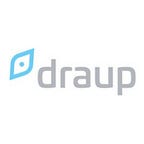Hiring Talent in the Age of Artificial Intelligence
AI makes machines have human-like intelligence. Meanwhile, machine learning (ML) is performed where data is retrieved, tweaked, and processed based on whether the goal was reached previously or not. AI can help humans accomplish more in less time by automating tedious and data-based tasks.
Various industries like online shopping, predictive investing, music streaming services use Artificial Intelligence (AI). It has now come to the benefit of the HR teams worldwide. HR teams need the right tools to implement AI that can impact your organization successfully.
How can companies use AI?
There are three types of tools that are used by companies for their hiring process these days.
Screening & automation: They help HR teams to filter and shortlist candidates. It grades candidate resumes for job relevance and moves them to the appropriate stage in the hiring process.
Recruitment chatbots & scheduling: Recruitment chatbots are like customer service chatbots. They collect information on candidates’ skillset and answer questions about the company’s hiring process. The software can find time slots to fit the schedule of the interviewer and the candidate.
Skills testing and matching: Resumes and interviews cannot gauge the candidates’ abilities. To counter this, companies have implemented job-specific testing abilities. They hire candidates based on performance, not just their work history, allowing companies to match their skill set to a candidate.
AI is a benefit for applicants. It will provide them with instant feedback, track the application status, and get basic questions answered — less time for candidates to look for work.
Look for Data Professionals!
While the right tools and technologies can successfully implement AI, human intelligence is also essential. Companies must hire a team that includes engineers, data scientists, and data-savvy business professionals.
There are two kinds of AI-talent companies must appoint.
- Analytics-enabled team: There are managerial roles that include marketing and analytics for driving business performance. Using data and analytics optimally results in greater productivity and operational efficiency. The analytics team identifies the customer wants by looking at social analytics, unusual network activity from real-time dashboards, or forecasting inventory using predictive analytics.
- Data science talent: This involves formally trained engineers and scientists. It requires an interesting and deep data pool and a well-organized platform that integrates and makes data available across the company.
A good AI/ML engineer understands a larger problem and the technical ecosystem they’re designed for, not merely the algorithm needed to identify the data set’s anomalies and outliers. They also must understand that AI sits at the intersection of human behavior, decision-making, technology, and this system’s interconnectedness.
AI engineers may write software but may fail to integrate the technical and business elements to arrive at a solution that addresses the problem holistically. This is where the analytics team comes in.
Restructuring the Organization
Companies must restructure their existing team to utilize the analytics teams. Instead of a centralized analytics team that serves the entire organization, modern companies must switch to a dedicated analytics team for each business division and function.
For example, the below graphic shows Amazon’s organizational structure. Amazon has each business unit with specific responsibilities and objectives. Each business unit functions independently and has its analytics team headed by a Head Executive.
An alternate way to hire a fantastic AI/ML talent
Hire candidates from non-traditional backgrounds: Recruiters must hire people who have crossed over industries, changed roles, or have demonstrated that they are connectors and integrators through a diversity of experience. These candidates offer the adaptive thinking necessary to build the future of AI.
Reskill your existing workforce: Reskilling is another way to meet the demand. Not reskilling your workforce will lead to the loss of 1,37 million jobs. It will cost a premium for the company to hire new employees.
Reskilling can save up to 50% of the cost per employee. To give you an example, the company can reskill a ‘Systems Engineer’ to a ‘Dig Data Analyst.’ Organizations must transform their approach to stay ahead in hiring AI talent and control their destiny.
AI-driven talent intelligence platform by Draup can identify disrupted job roles and in-demand skills. Talent managers can analyze the emerging roles, evaluate the talent ecosystem, predict optimized future career paths, recruit talent, map out a reskilling journey with courses/certifications to fast-track transition.
